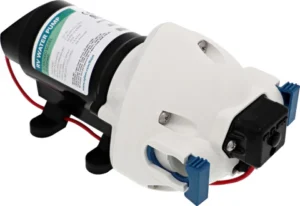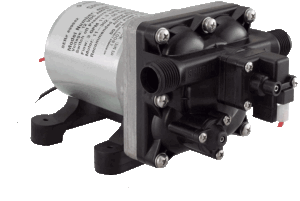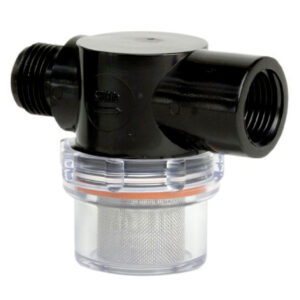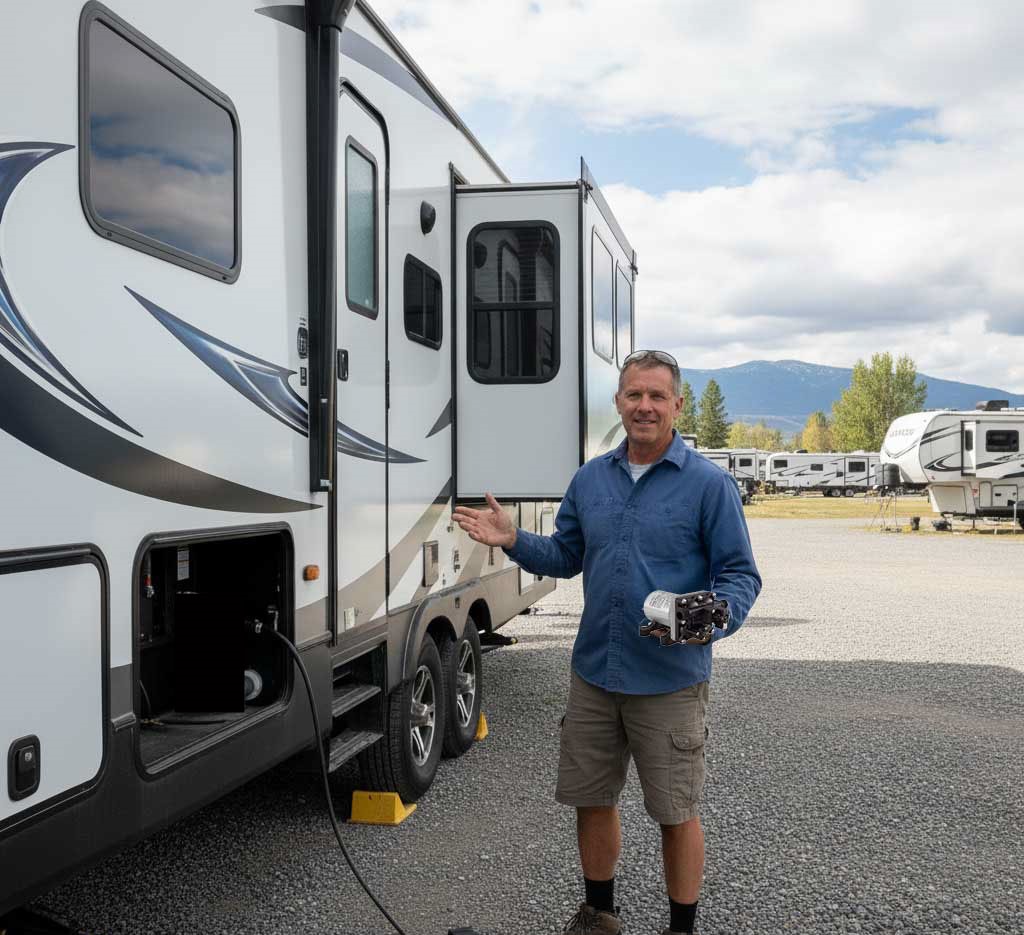How do I know if my RV Water Pump is not working?
 There are several key indicators that your RV’s water pump is not working properly, including low water pressure, unusual noises, and the pump running continuously.
There are several key indicators that your RV’s water pump is not working properly, including low water pressure, unusual noises, and the pump running continuously.
Water pump type basics: Most RV water pumps are 12 volts, 3 gallons per minute (gpm), and ½” male pipe thread (mpt) on the inlet and outlet of the water pump. Most RV water pumps have the same footprint or installation pattern as the Shurflo Water Pump. Flojet RV water pumps feature a quick-connect system for attaching the water lines. It is more specialized, but it is a great system and a great pump. I recommend that if you have a Flojet, stay with a Flojet water pump.
To begin troubleshooting, ensure your freshwater tank is not empty and you are not connected to city water with the pump on.
Step 1 – Water tank has water – Check the feed line from the tank to the water pump by disconnecting the line from the pump; water should drain out. This indicates water is reaching the pump.
Step 2 – Make sure the RV is not connected to city water. The RV shouldn’t have any other source for water other than the freshwater tank.
Step 3 – When ready, turn the water pump on to begin the diagnosis.
 Signs of a malfunctioning RV Water Pump , No water flow – This is the most obvious sign. If you turn on a faucet and nothing comes out, it could mean the pump isn’t turning on, is not primed, or can’t build pressure.
Signs of a malfunctioning RV Water Pump , No water flow – This is the most obvious sign. If you turn on a faucet and nothing comes out, it could mean the pump isn’t turning on, is not primed, or can’t build pressure.
Low or inconsistent water pressure – If water only trickles out of faucets or the pressure varies from weak to strong, the pump is likely struggling. Common causes include a clogged filter, air in the lines, or worn-out pump parts.
Pump runs continuously – A working pump should turn off once it builds enough water pressure. If it runs non-stop, there could be a hidden leak, a faulty check valve, or air in the system.
Unusual or loud noises – While some humming is normal, new or excessive noises are a warning sign. These can include grinding or rattling, which could indicate trapped air, a loose mounting, or internal wear.
Cycling on and off – If the pump turns on and off when no water is being used, it may be compensating for a slow leak somewhere in the plumbing.
The pump won’t turn on – If you hear nothing when you flip the switch, there may be an electrical issue.
No power: This can be caused by a blown fuse, or loose or corroded wiring.
Bad switch: The switch (often in the kitchen or bathroom) could be faulty.
Spitting or spurting faucets – Air mixed with the water when it comes out of a faucet is a common sign that the pump is sucking air somewhere.
The air is often caused by a loose connection on the inlet line between the freshwater tank and the pump. Or it could be a cracked or loose filter bowl near the pump. Possibly a winterizing valve that is partially open.
Common issues and troubleshooting steps
Before assuming the pump is broken, check for these simple fixes:
 Clogged strainer or filter: Most pumps have a small, transparent sediment filter on the intake side. Debris can clog it, restricting flow and causing poor performance.
Clogged strainer or filter: Most pumps have a small, transparent sediment filter on the intake side. Debris can clog it, restricting flow and causing poor performance.
Airlock: If the system has been drained, air can become trapped. To fix this, turn on a faucet closest to the pump and let it run, then open all other faucets one by one until a steady stream of water comes out.
Winterizing valve position: If you recently de-winterized, a valve might be set to the wrong position, causing the pump to draw air instead of water from the tank.
City water vs. pump: When connected to city water, the pump should be turned off. Running both can damage the system. If these simple fixes don’t solve the issue, the pump itself may have a damaged diaphragm or require replacement.
In Conclusion:
RV Water Pumps do fail, and it seems like it is when we least expect it, or it is the most inopportune time. Being prepared with the basic knowledge of troubleshooting can save time and money. A simple fix can be the difference between staying out camping for a few more days or packing up and going home early. Stay Smart and Be prepared!
